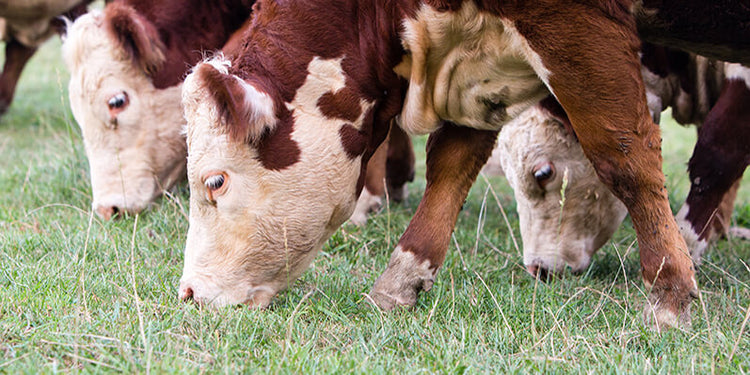The number one question producers ask when learning a new feed or product is, “What does it cost?” And almost always, units will be given in terms of dollars per weight, whether in tons, pounds, or bushels. While this number can ultimately get you to what you are looking for, there may be a better way to think about it, depending on your final goals.
Here are a couple of other ways to look at it.
- Dollars per unit of weight
- Dollars per head per day
- Feed cost of gain (FCOG)
Dollars per unit of weight
This is the most common way to evaluate feed prices and can vary depending on feedstuffs. For example, corn is measured in bushels, feed-in tons, and additives are usually measured in pounds due to their low inclusion rates. One problem with this determinant of cost is that it’s not very comparable. If you were to convert corn from bushels to tons, it likely would cost much less on a per ton basis than a blended feed would, but it tells you nothing about the nutrients you need or what kind of performance you may get out of it.
Dollars per head per day
This is an easy way for producers to know how much they spend per day on feed costs and is especially useful in maintenance animals, such as cows and bulls.
Let’s say Product A costs $250/ton, and Product B costs $300/ton. It’s easy to assume Product A will cost you less in the long run. But before making that decision, think to yourself, “What are the feeding rates of these products?” Imagine the $250/ton product requires feeding 10 lbs./head/day, and the $300/ton product requires feeding 5 lbs./head/day.
Product A:
- $250 ÷ 2,000 lbs. = $0.125/ lbs.
- $0.125 × 10 = $1.25/head/day
Product B:
- $300 ÷ 2,000 lbs. = $0.15/ lbs.
- $0.15 × 5 = $0.75/head/day
We can see that it is ultimately the lesser expensive product because we can use less of Product B.
Feed Cost of Gain
Feed cost of gain (FCOG) is a measurement of how much feed was required to increase gain by one pound. This measurement is a measurement of cost and savings and is also used to measure performance efficiency. FCOG is most important in growing animals such as calves and yearlings.
Let’s use the same product examples used above, with Product A costing $250/ton, feeding 10 lbs./head/day, and expecting 2.2 lbs. in average daily gain. We expect 1.9 lbs. on average daily gain from Product B when fed at a rate of 5 lbs./head/day, and it costs $300/ton.
Product A:
- $250 ÷ 2,000 lbs. = $0.125/ lbs.
- $0.125 × 10 = $1.25/head/day
- $1.25 ÷ 2.2 lbs. in average daily gain = $0.57 per lb. of gain
- $0.125 × 10 = $1.25/head/day
Product B:
- $300 ÷ 2,000 lbs. = $0.15/ lbs.
- $0.15 × 5 = $0.75/head/day
- $0.75 ÷ 1.9 lbs. on average daily gain = $0.39 per lb. of gain
- $0.15 × 5 = $0.75/head/day
In this example, even though you are gaining less per day, your overall feed cost per pound of gain is less.
Feed products will vary in cost as the market changes, but it’s always important to look at the numbers from multiple angles. At first glance, Product A appeared to be the cheaper option, but by breaking it down in measurements comparable to the goal at hand, we can determine which product is best suited to achieve your goals.
AgriGro Cares About Efficiency
Producer efficiency is one of the key drivers for the development of AgriGro’s products. NutriZyme® improves efficiency through improved digestion, leading to increased gain, greater weaning weights, and higher milk production.
Improve your efficiency and stretch your dollar with the help of AgriGro.
Contact a rep or click here to learn more about incorporating Nutri-Zyme® into your production.
 Order Now Contact a Representative
Order Now Contact a Representative


